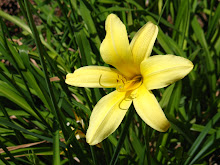“The founder of the Tudor Dynasty was Henry VII, who emerged triumphant after the brutal Wars of the Roses which split England between the houses of Lancaster and York. This period of civil war is named for the symbols of the warring houses; Lancaster was represented by a red rose, while York was represented by a white rose. Henry VII, a relative of the House of Lancaster, managed to secure the throne in 1485, establishing the Tudor Dynasty, and he rapidly set about consolidating power in the hands of the monarch, stripping the nobility of many of their powers in the interest of avoiding future revolts and civil wars. Henry VII wisely married Elizabeth York, uniting the feuding houses, and he created a distinct symbol for the Tudor Dynasty: the Tudor Rose, which has both red and white petals, symbolizing unity.” (source)
In 1509 his son, Henry VIII, came to the throne. He married Catherine of Aragon on June 11, 1509. They had some children, but most died young. He went to war against France, and met with a little success. (source) (Elton 8)
His son, Edward VI, was his heir to the throne and became king in 1547. He was 18 at this time. “He was more ambitious than his father and spent money on warships and guns, making the English fighting fleet the best in Europe.” (source) When he wanted to divorce his first wife to marry his second, the pope refused. The king was so angry that “he broke with Rome and declared himself ‘Supreme Head of the Church.’” (source) King Edward VI married and then divorced 4 times before finally settling with his 5th wife. (Weir 26)
Next in the Tudor Dynasty came Edward VI’s cousin, Lady Jane Grey, in 1553. She was deposed only 9 days later, and then executed in 1554. After Lady Jane Grey in 1553 came Queen Mary I, daughter of Catherine of Aragon. “In December a law was passed that allowed bishops of the Church of England to sentence heretics to death by burning. Almost 300 people were burned alive during Mary’s reign with Mary’s full approval, earning her the nickname “Bloody Mary.” (source)
Her half-sister, Queen Elizabeth I, was the last of this dynasty, ruling from 1558-1603. After she died without naming an heir, the House of Stuart took over.
Works Cited
Elton, G. R. England Under the Tudors. New York: Routledge. 1992.
Weir, Alison. The Children of Henry VIII. New York: Ballantine Books. 1996.
